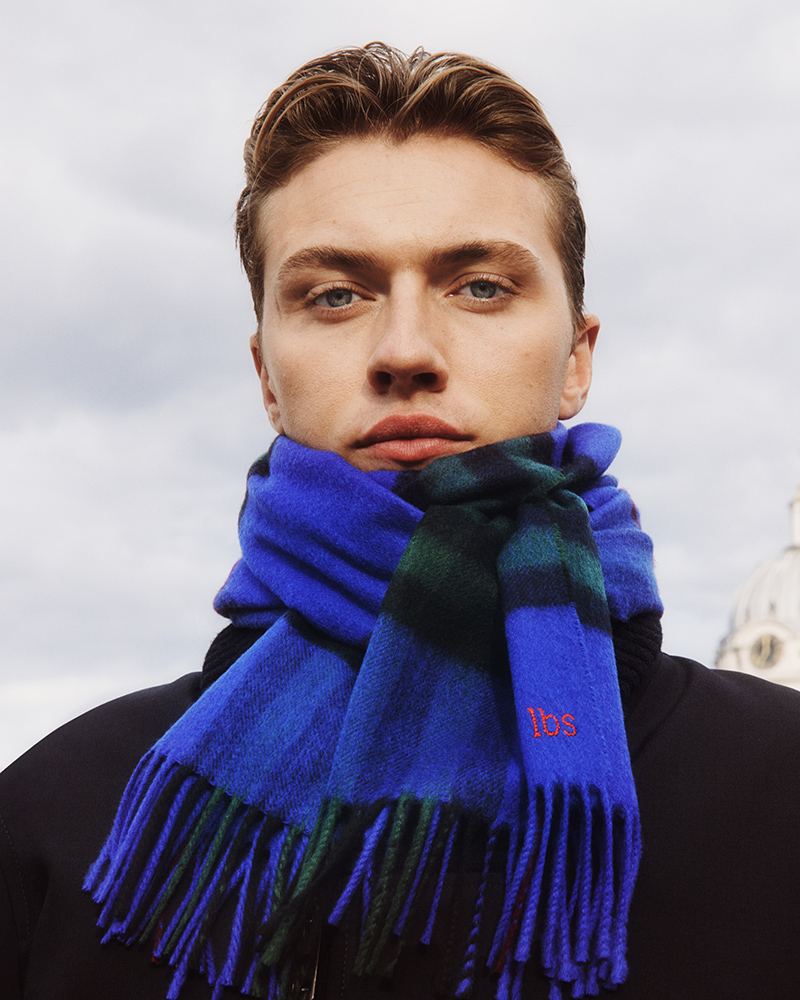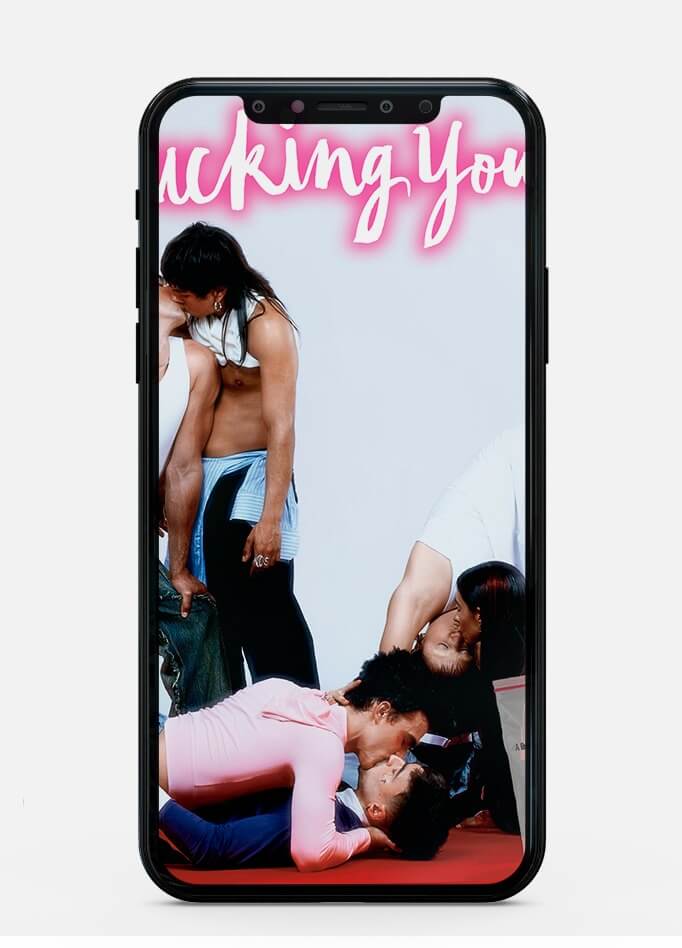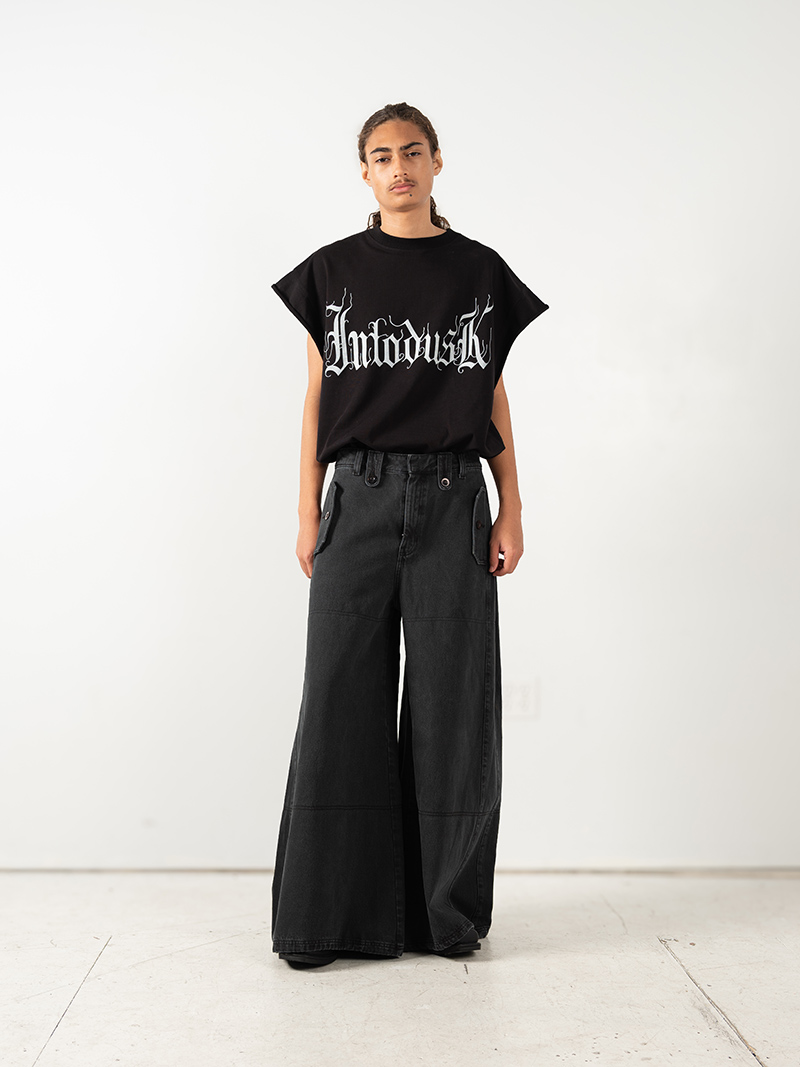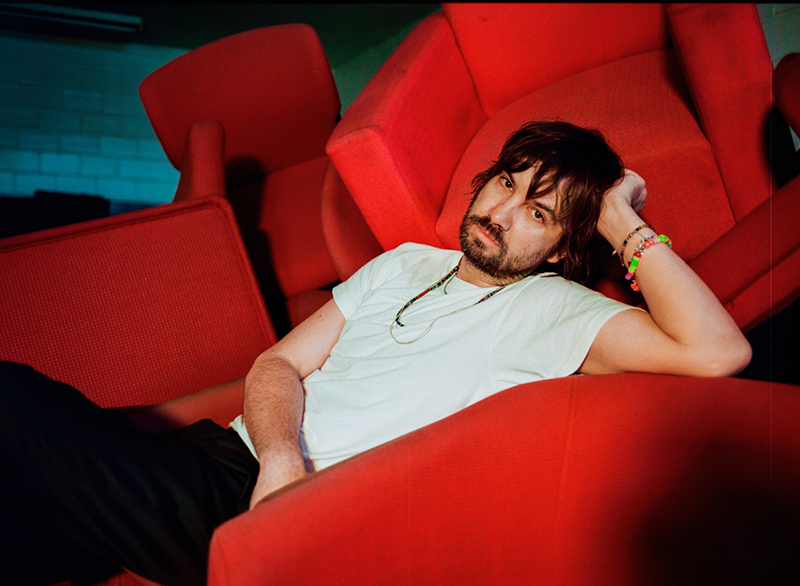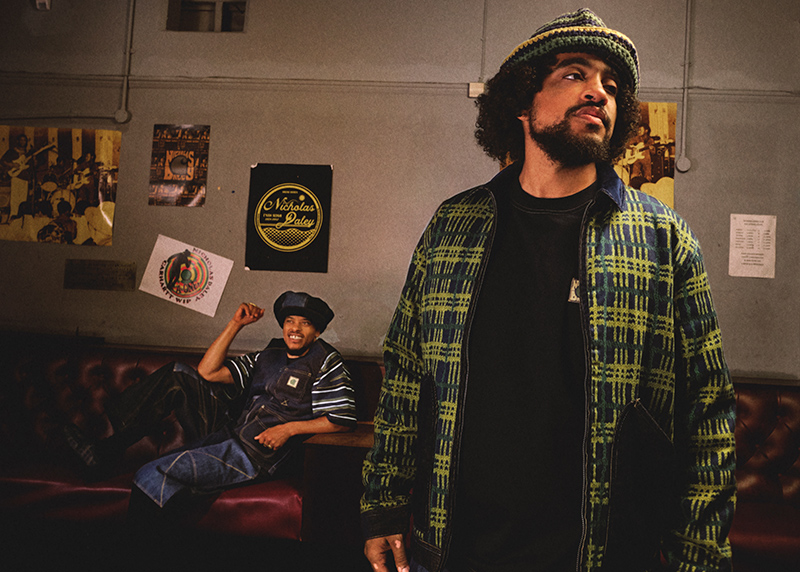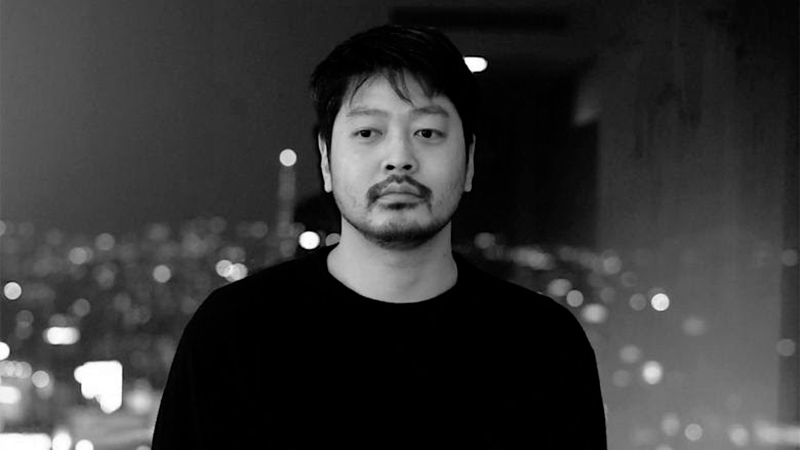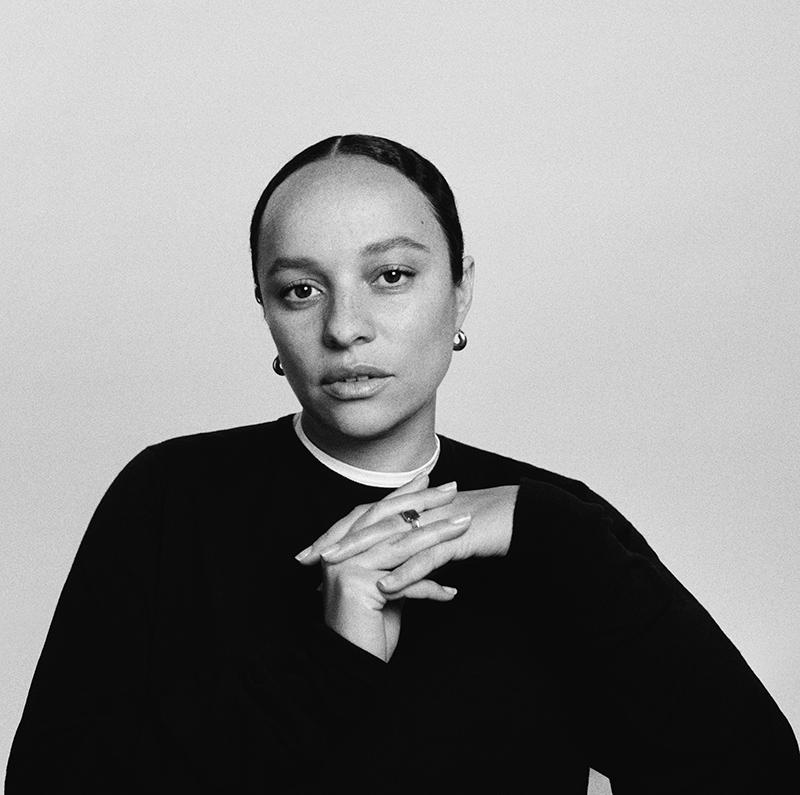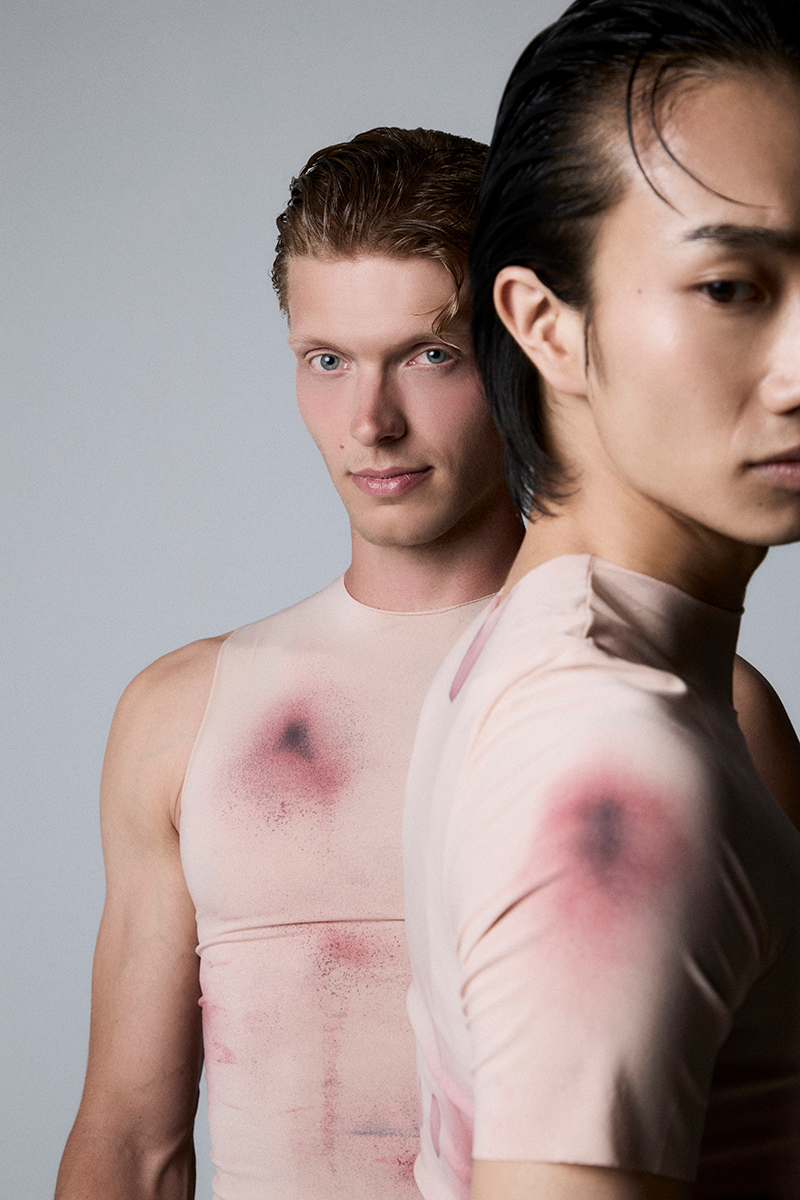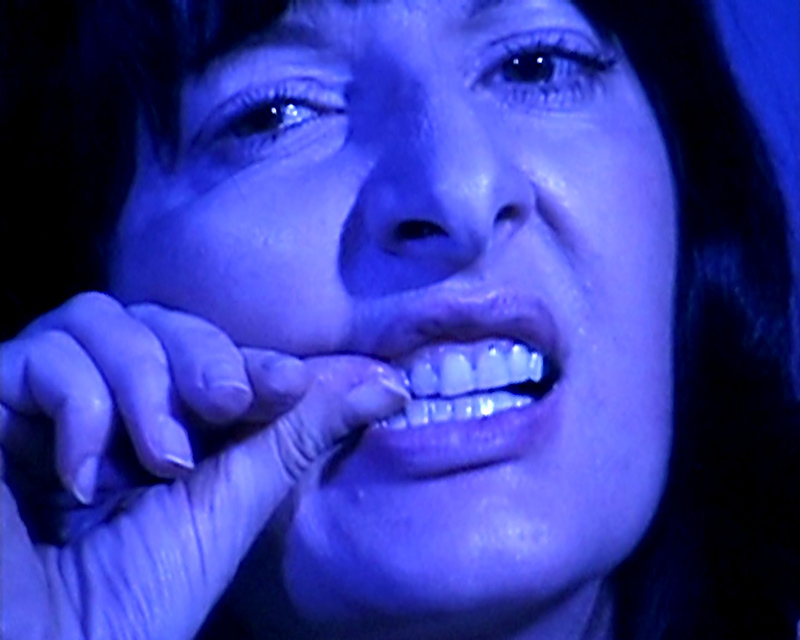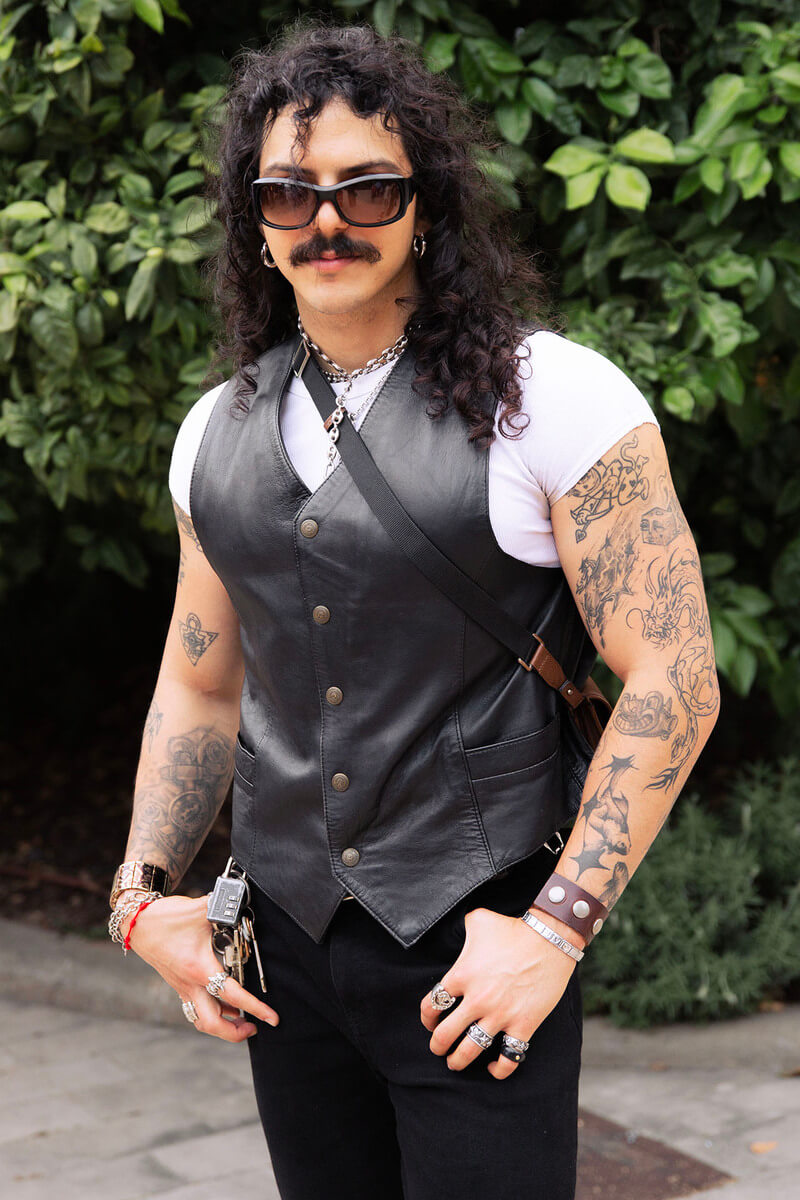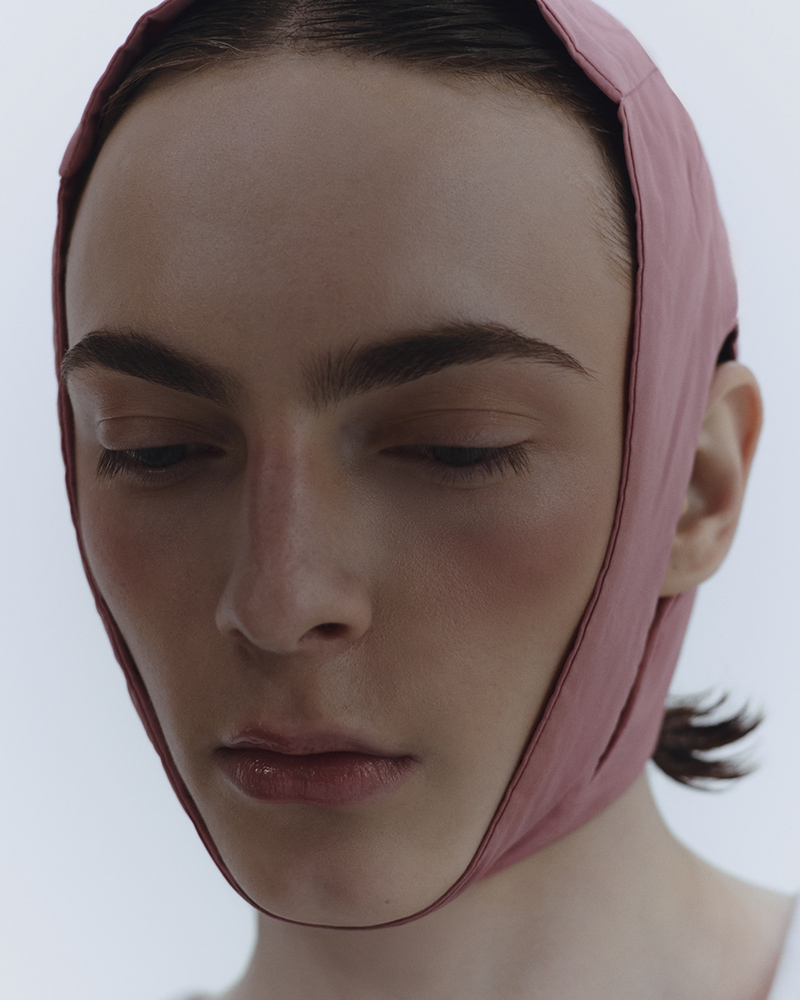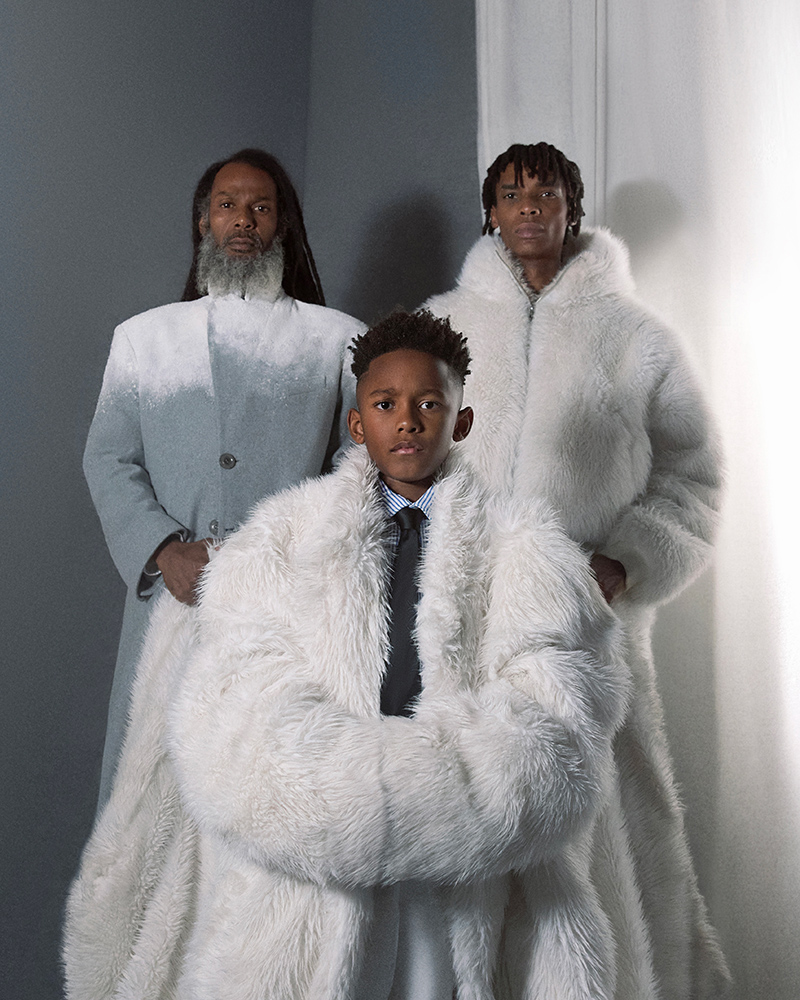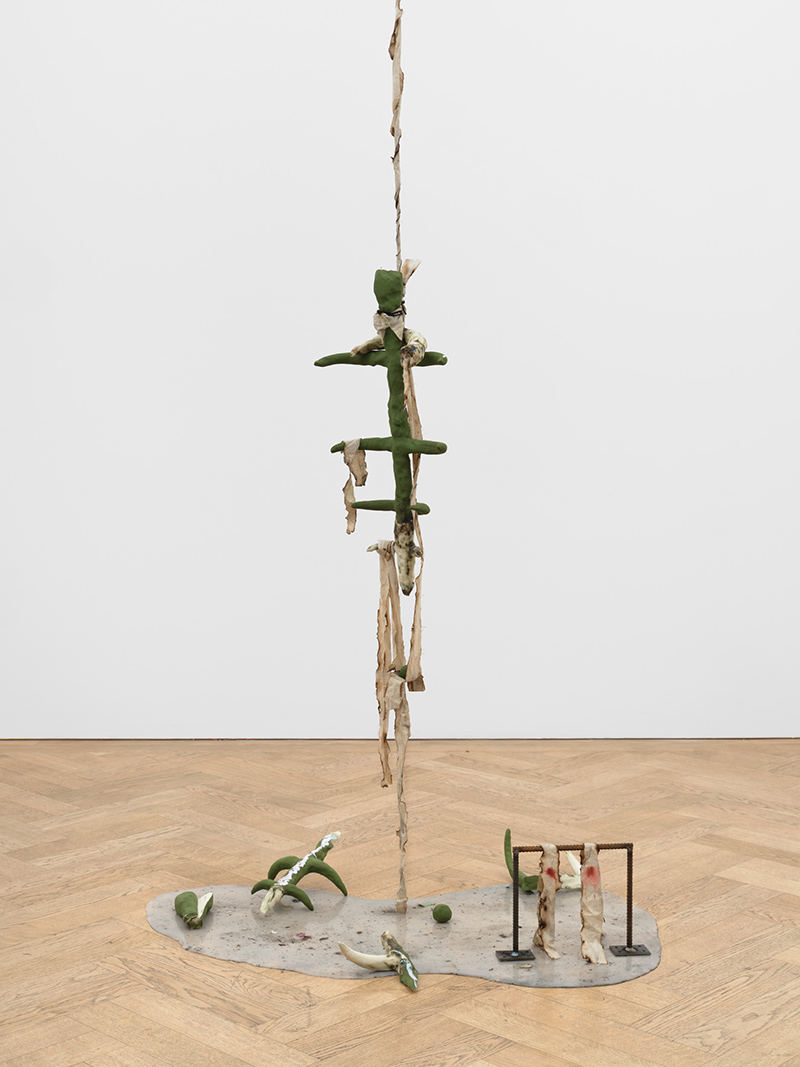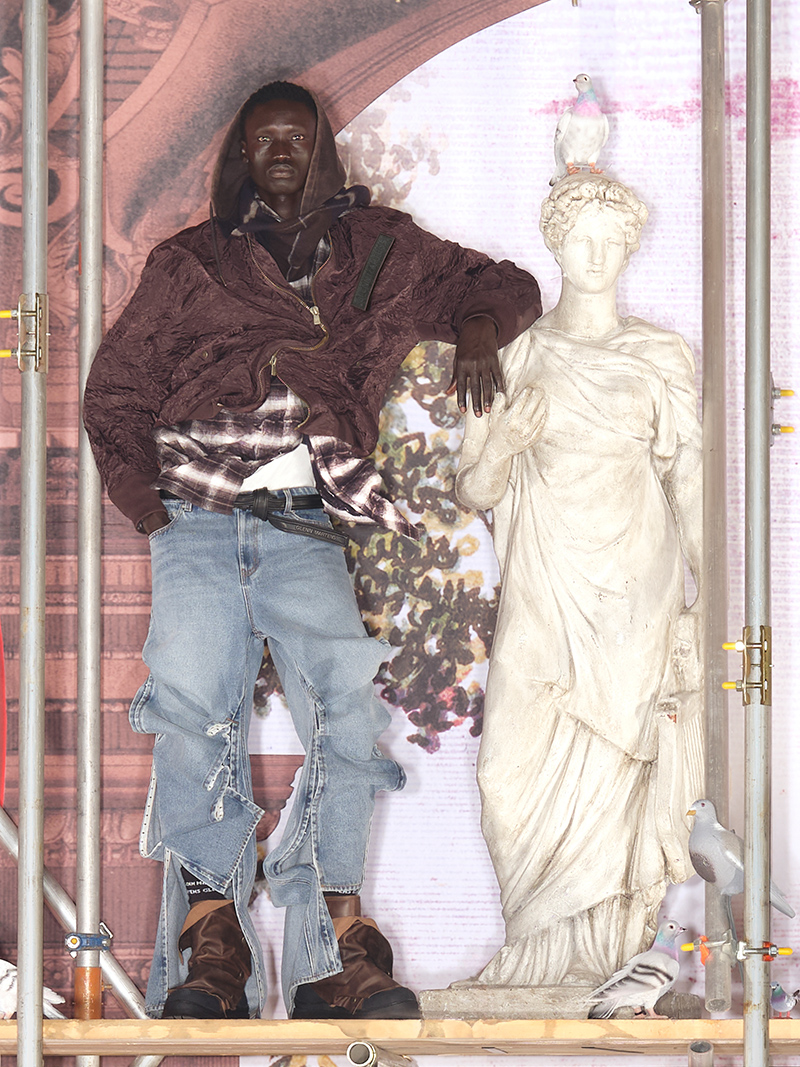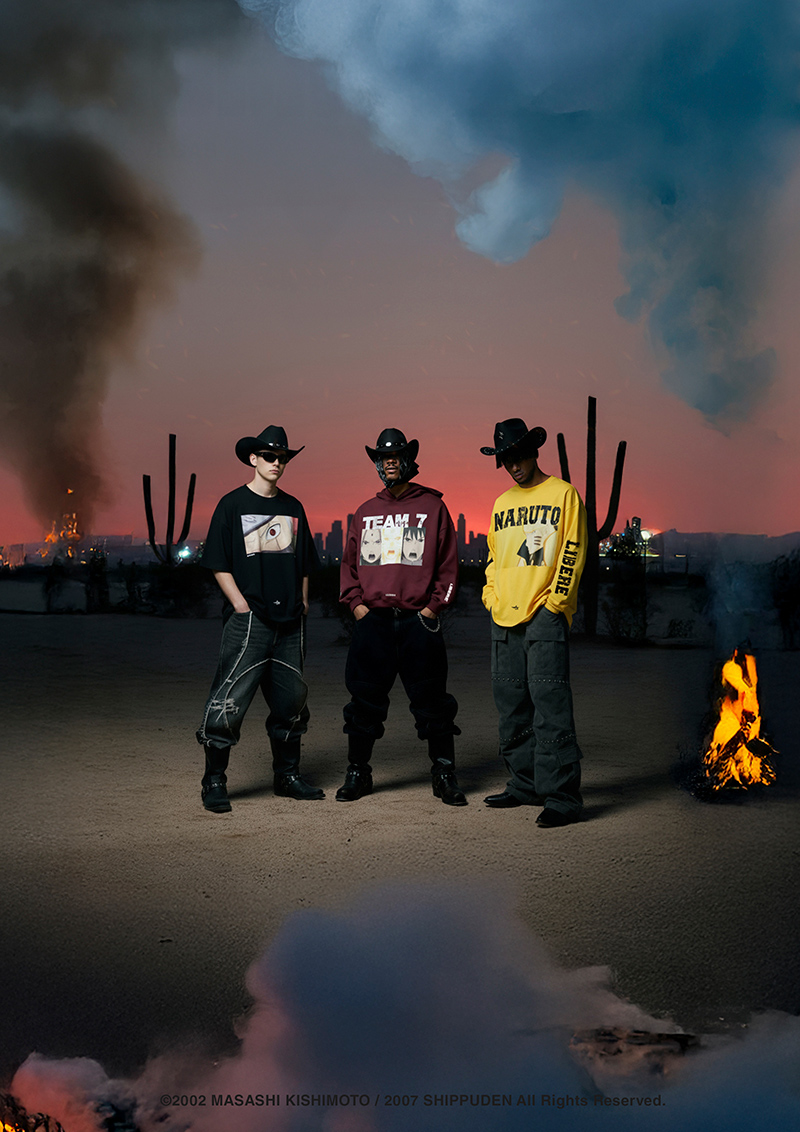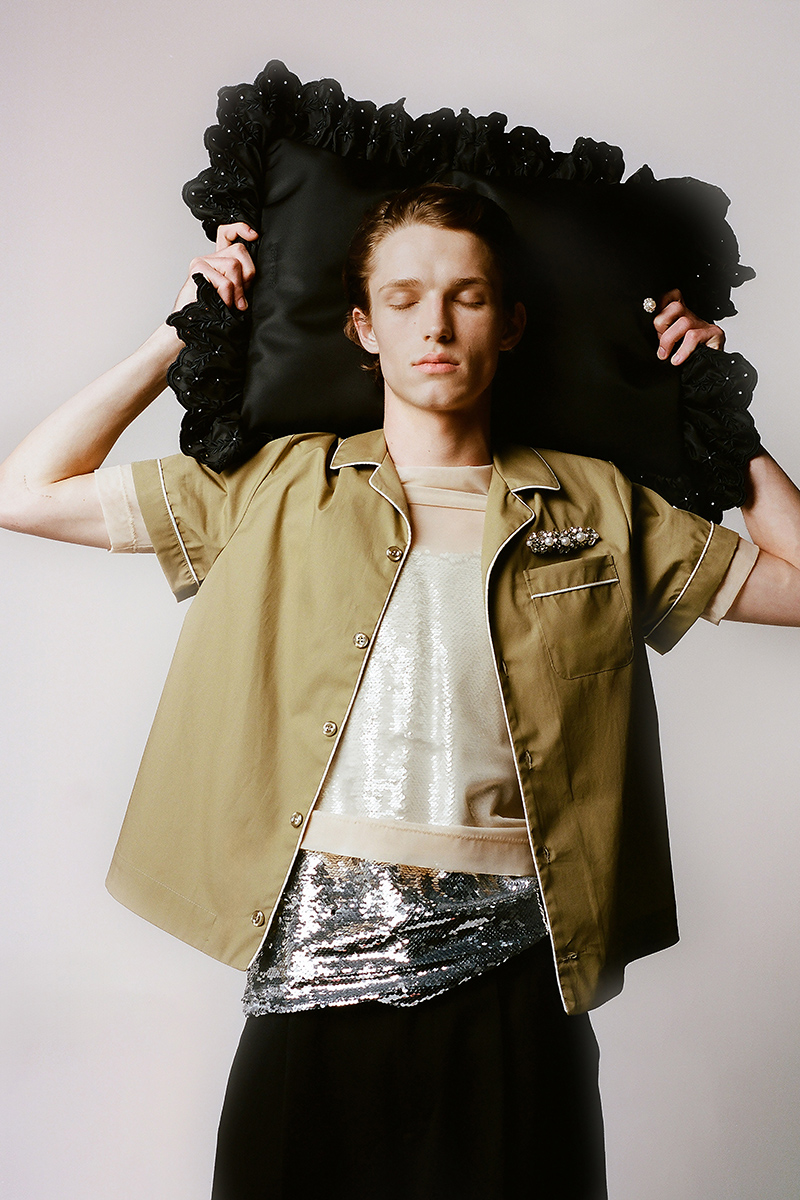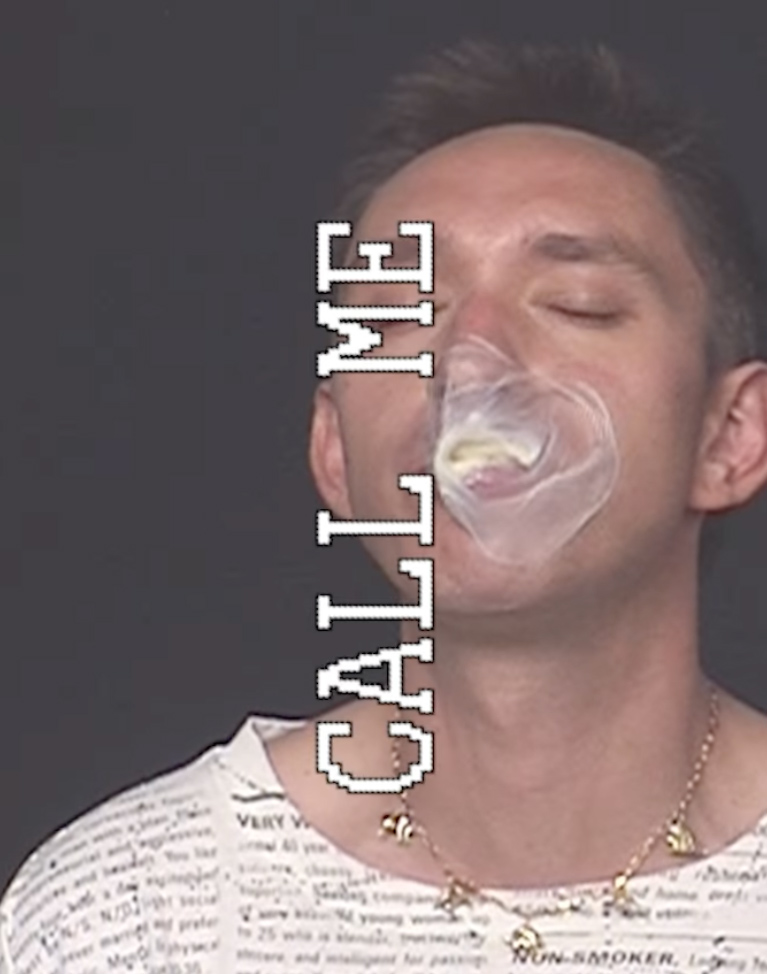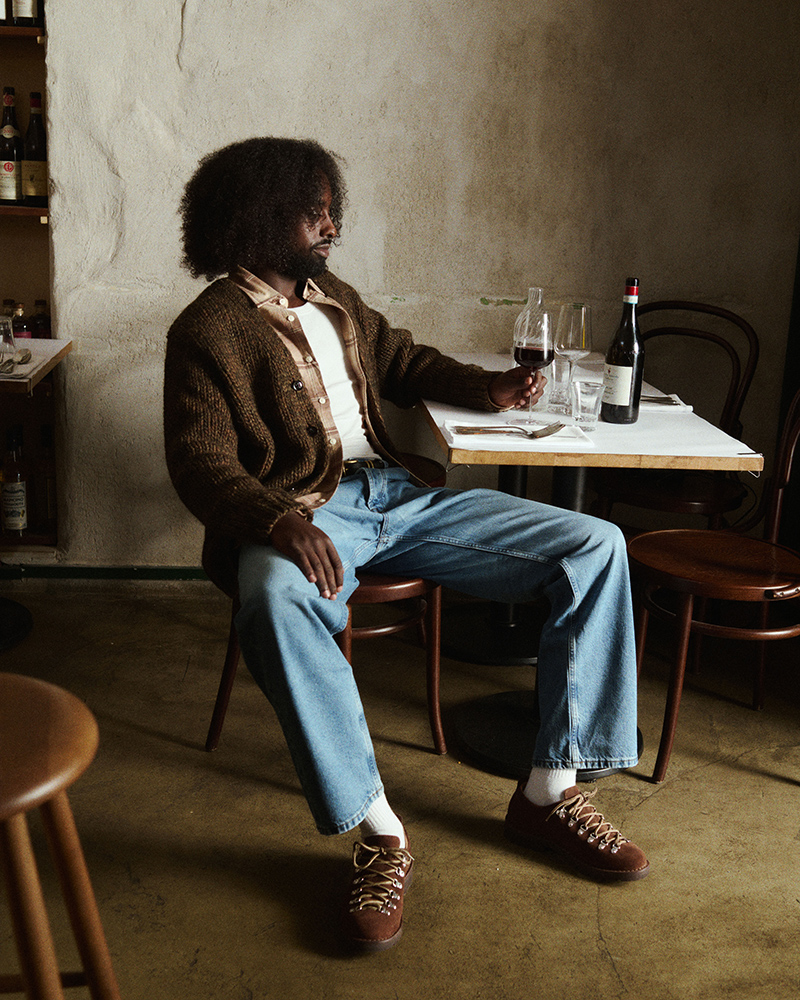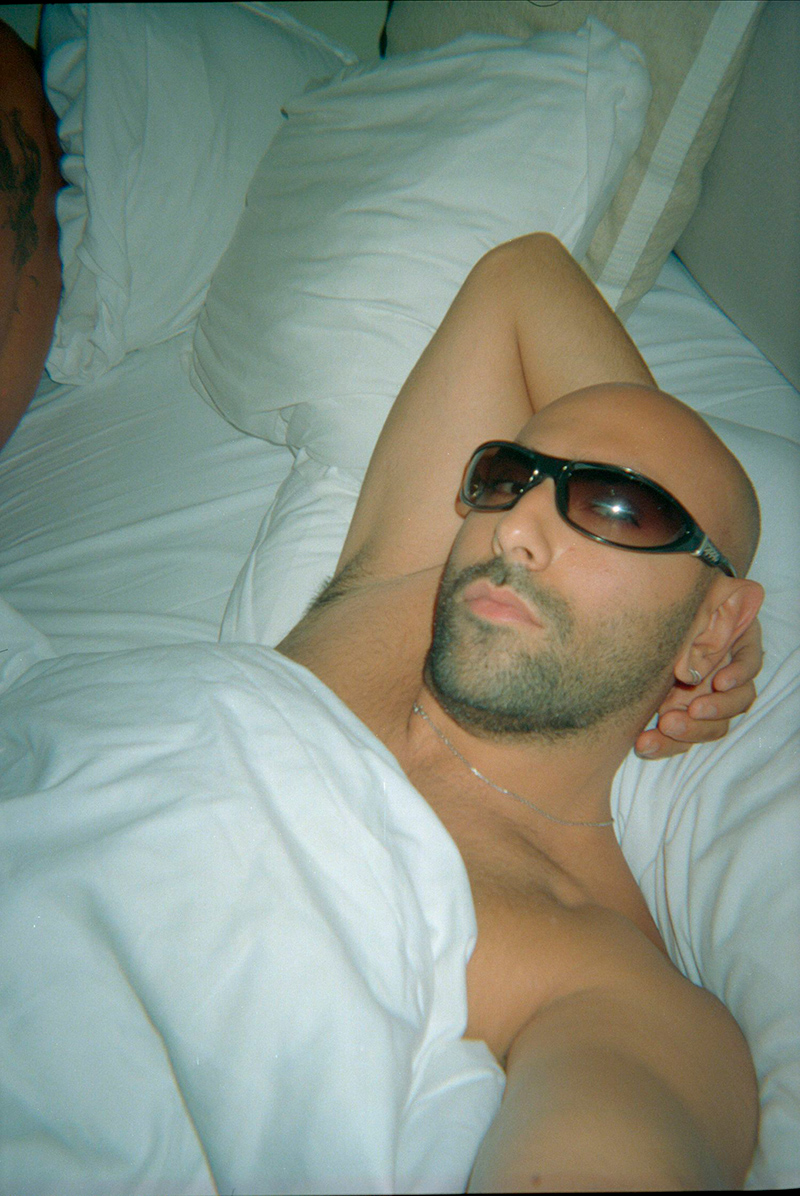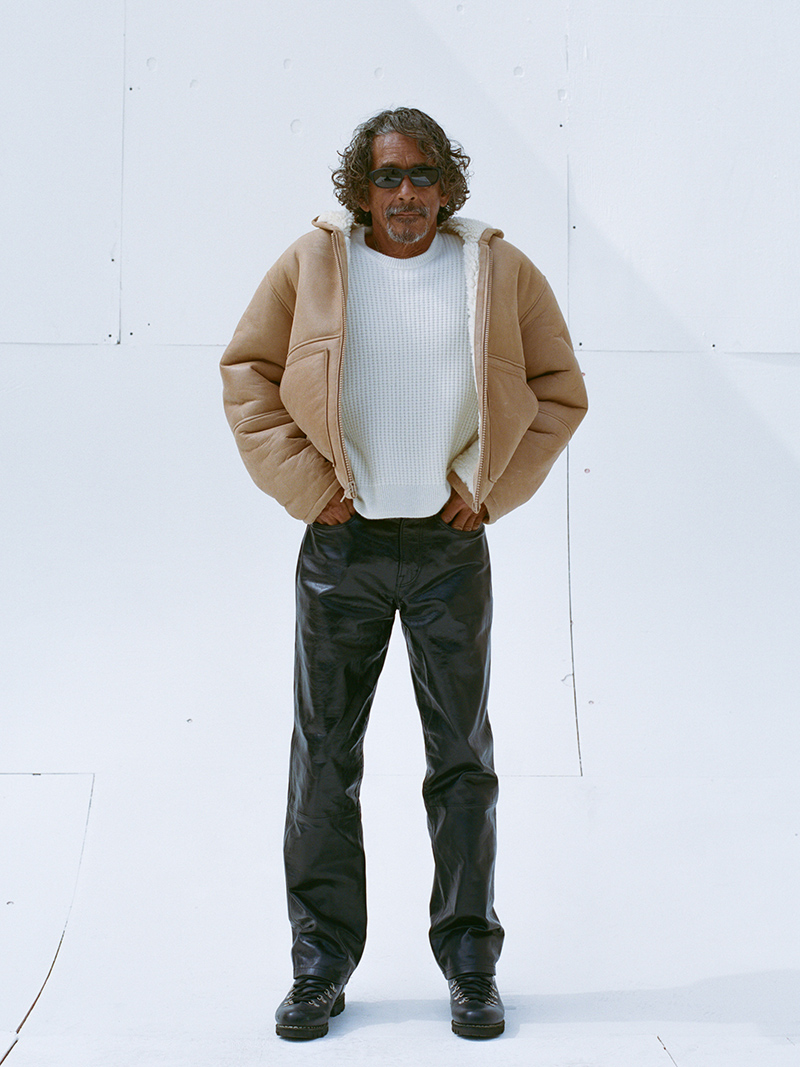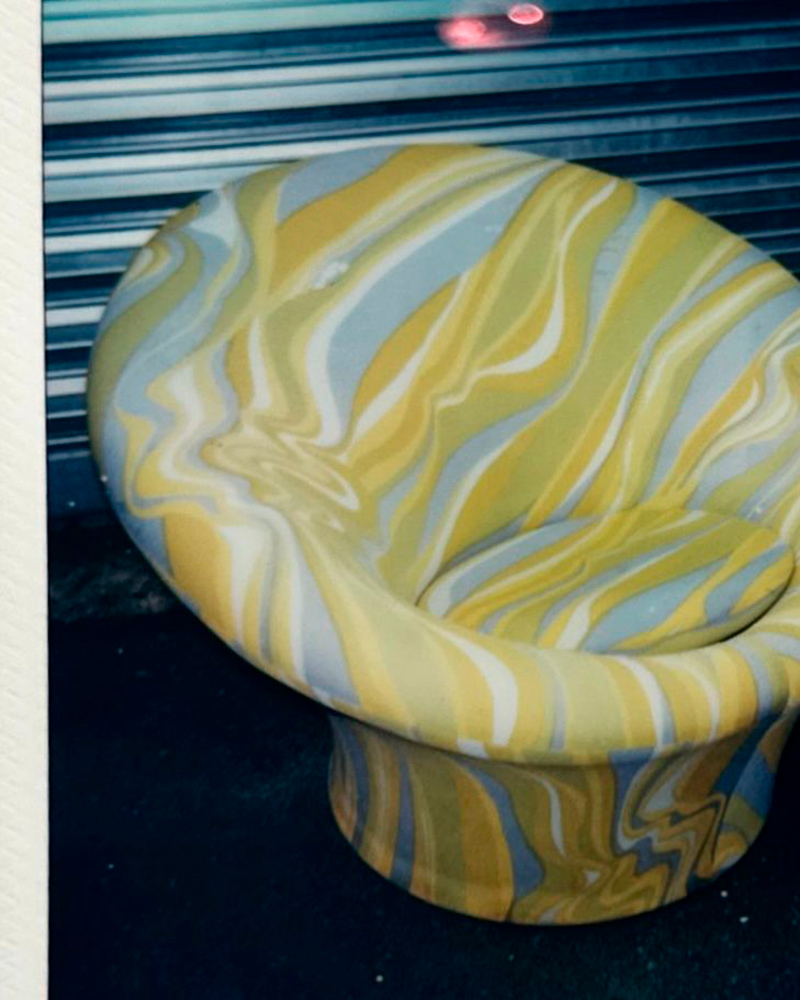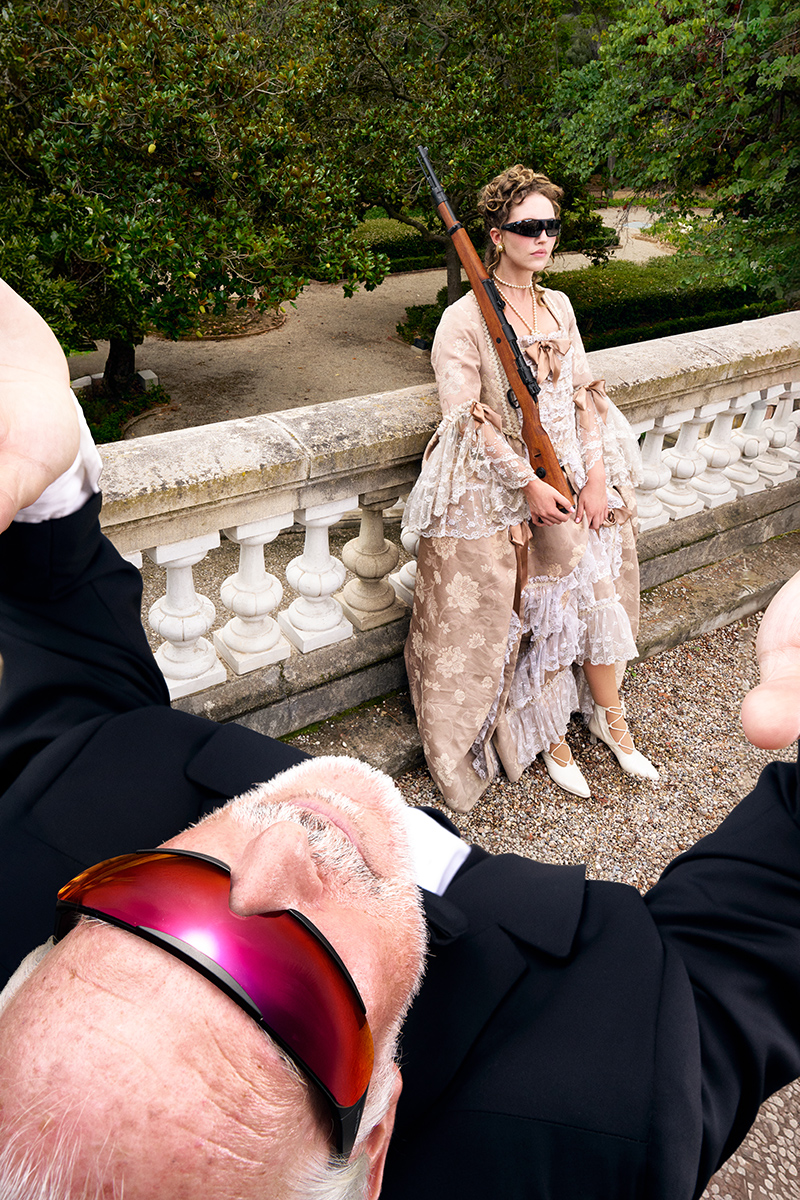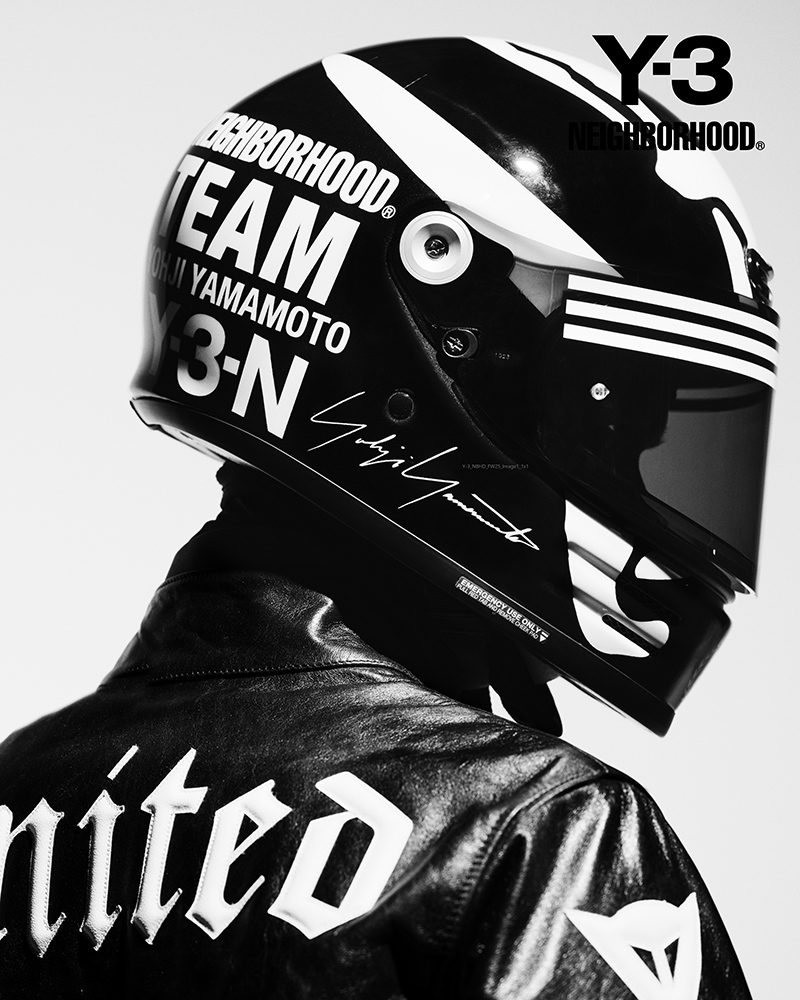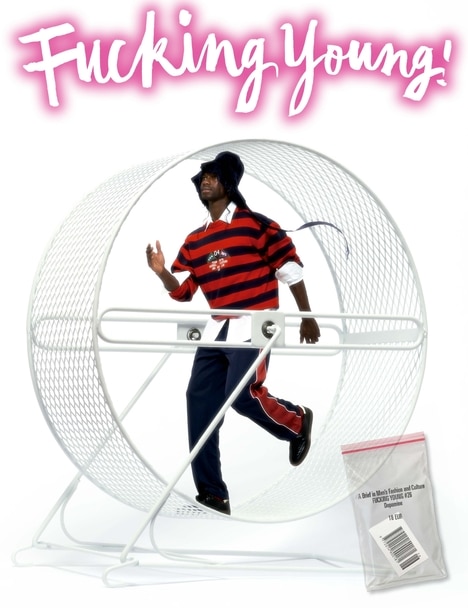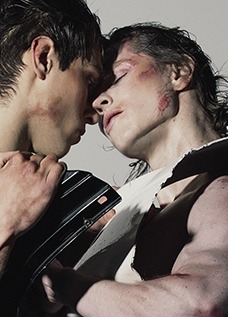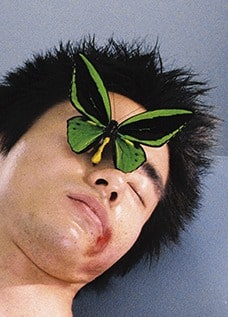For AAA Studio, BURdeNOUT isn’t just a collection. It’s a reclamation. A coming back to life. Born out of exhaustion, doubt, and emotional collapse, it marks a turning point for the brand and its designer, Arnau Climent. A moment where vulnerability becomes a language, and burnout, a blueprint for resilience – as well as a bold, deeply personal debut at 080 Barcelona Fashion.
Presented with a rawness that feels both intimate and defiant, the collection blends softness and strength, emotion and edge. There’s comfort, but also sharpness. There’s movement, flexibility, a constant invitation to inhabit your body in new ways. Every piece feels like a quiet rebellion – not against the system, but against the pressure to be fine when you’re falling apart. An array of garments that embody the uncertainty and the feeling of exhaustion Gen Z faces and their willingness to transform and evolve.
We spoke to Arnau about duality, designing for real life, and how clothes can become soft armour for anyone who’s ever had to rebuild themselves from the inside out.
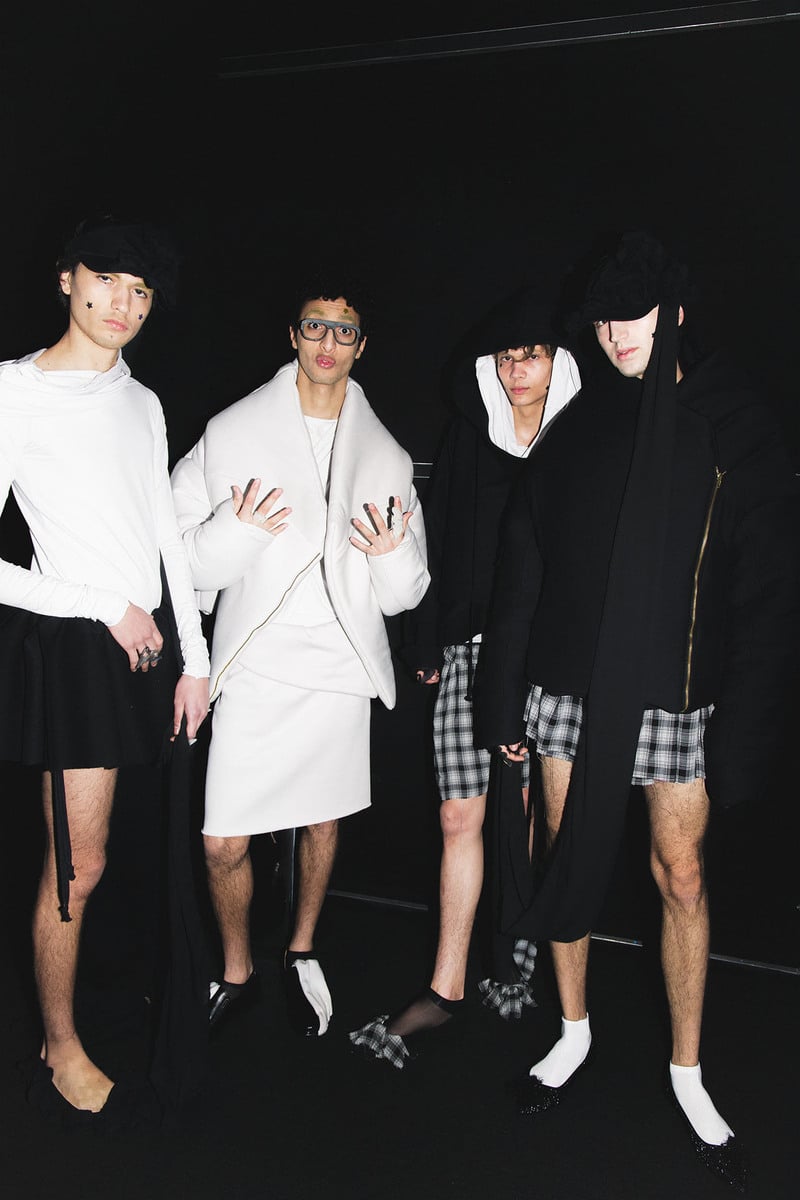
What does presenting BURdeNOUT mean to you after the uncertainty you experienced following your last collection?
Presenting BURdeNOUT after the period of uncertainty I went through following my last collection is deeply meaningful for me, almost surreal. If someone had told me a while ago that I’d be showing my work at 080 Barcelona Fashion Week, I wouldn’t have believed it. I was at a place of emotional and mental collapse, feeling lost, and drained, questioning whether it even made sense to continue in such a demanding industry. BURdeNOUT was born from that very state of burnout, but also from a need to transform that pain into something new, into a different kind of energy.
What strikes me most about this process is the paradox of going from my lowest point to living one of the most exciting moments of my career. Sometimes, when your body and mind say it’s enough, what they’re really asking for is a change, a new way of seeing things.
This is your first time showing at 080 Barcelona Fashion Week – what do you hope to receive from this platform?
Walking the runway at 080 Barcelona Fashion is a dream come true and a big step for both me and my brand, AAA Studio. After so much effort, dedication, and moments of uncertainty, seeing the brand on such an important platform is proof that all the hard work has been worth it. More than a growth opportunity, it’s a moment to reaffirm the brand’s identity and share the essence of what we do with the world. I hope this show not only brings us recognition and international reach, but also connects with people in an authentic way and leaves a lasting impression on those discovering the brand. For me, this is just the beginning of something much bigger.
How does your background in creating costumes for drag queens and theatre influence your current fashion vision?
I think it’s essential to explore fields outside your comfort zone in order to gain new perspectives and enrich your creativity. It’s been an endless source of inspiration – constantly exposing me to new stimuli and challenges that push me to think differently.
Costume design for drag queens is a universe where exaggeration, theatricality, and personal expression are key. Fashion stops being purely aesthetic and becomes a powerful storytelling tool – one that challenges norms and empowers the wearer. I’ve learned to play with proportions, colors, materials, and textures in a much bolder way, and that has definitely shaped my overall approach to design. It taught me to think outside the conventional, to value craftsmanship and experimentation, and to see fashion as a space for freedom, expression, and transformation.
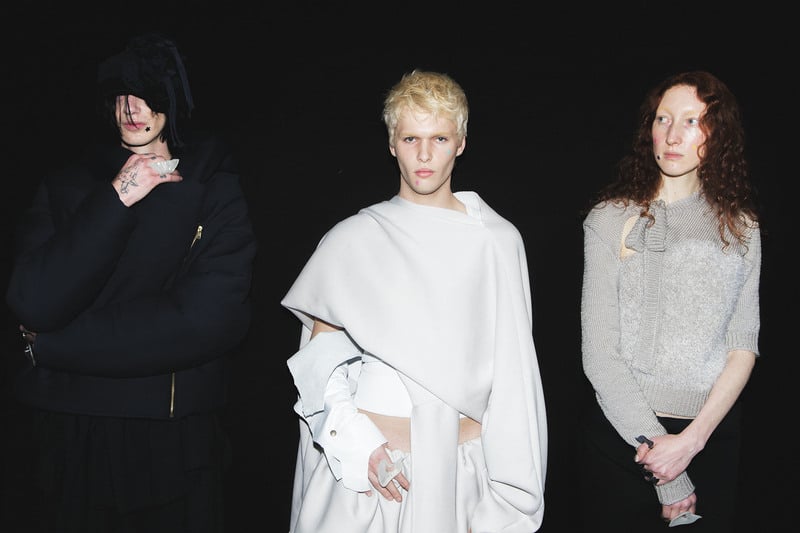
How would you describe the DNA of AAA Studio today, after exploring both performative and commercial fashion?
AAA Studio has evolved into a space where experimentation and functionality are in balance. Since the beginning, the brand has been driven by values like inclusion, innovation, and versatility – all core elements that remain central to its identity. It continues to be a creative brand that challenges conventions, but now with a clearer sense of purpose and a more conscious relationship with the people who wear the clothes.
That said, I still feel like I’m in a constant process of definition. Fashion is an evolving language, and with each collection, I try to let it grow and transform while staying true to its core values and creative spirit.
What does this collection bring to the evolution of the brand and to the fashion world in general?
This collection offers a fresh and different perspective from what we’re used to seeing. Through BURdeNOUT, I wanted to portray a reality that my generation is facing. A moment of burnout and uncertainty, but also of resilience and transformation. Using fashion to express this reality is key, because it has always been a powerful way to channel emotions and social situations.
The collection reflects a bold and youthful vision, but also aims to connect with a generation that engages with fashion differently, seeking garments that not only look good, but also tell a real story. In that sense, BURdeNOUT is a statement about how fashion can reflect the challenges and emotions of our time, offering something beyond the visual – a message of change, adaptability, and self-expression.
What role does comfort play in the message you’re sending with this collection?
Comfort plays a key role because it aligns with current needs and the versatility that today’s audience is looking for. For me, a garment shouldn’t just be visually appealing, it also has to be functional and easy to wear.
Each piece in this collection is designed to adapt to different settings, something that can work for daily wear but also for special occasions, depending on how it’s styled and accessorized. That kind of adaptability is essential in contemporary fashion, where we increasingly seek pieces that transition seamlessly between moments without sacrificing style or comfort.
The designs play with volume and flexibility – many are adjustable or feature looser silhouettes, allowing for greater movement and a personalized fit for different body types. I also incorporated knit fabrics to reinforce the idea of comfort – making the pieces even softer and more pleasant to wear.
To me, comfort doesn’t mean giving up on creativity or sophistication. It’s about creating pieces that are both visually impactful and a joy to wear, empowering people to express themselves naturally and confidently.
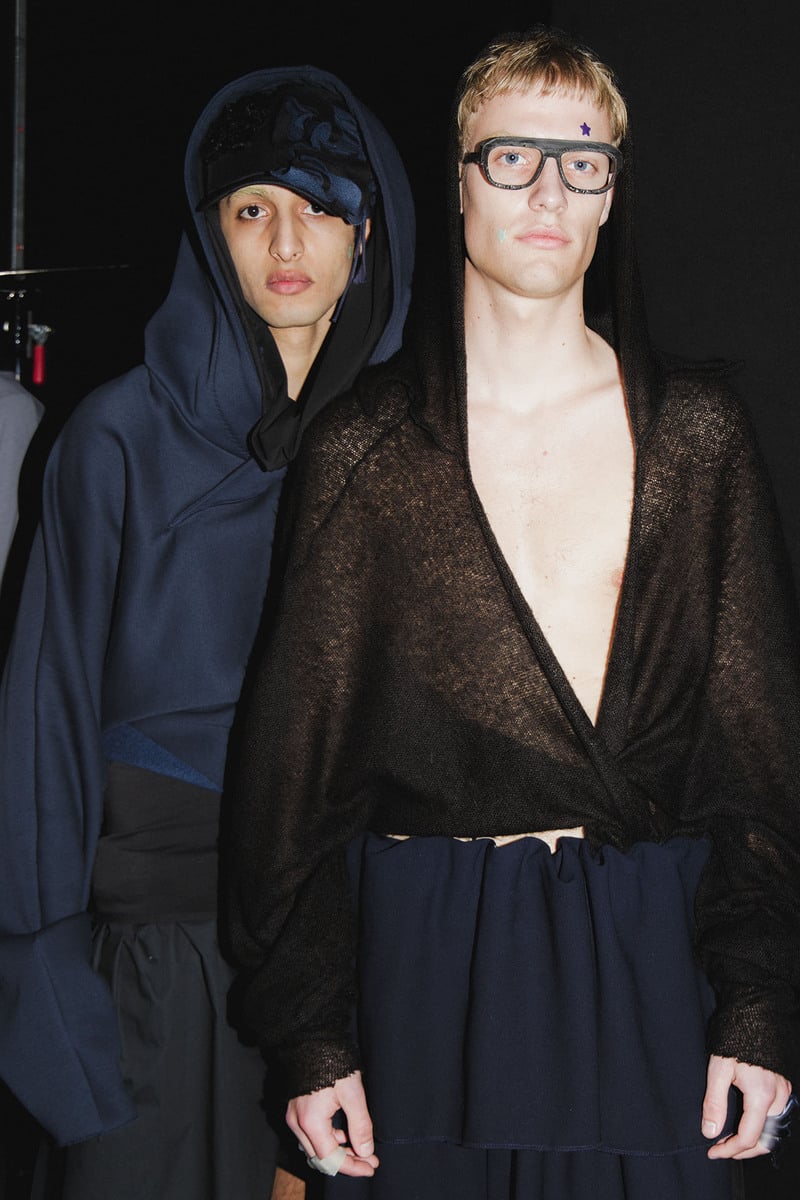
Besides Sade, what musical references have influenced the universe of this collection?
Ariana Grande, Beyoncé, Kali Uchis, and others… But beyond individual artists, what really inspires me is music as a whole – the sounds, textures, lyrics, and emotions it conveys. Every song tells a story, sparks a feeling, and creates an energy that can be translated into shapes, colors, and fabrics. Music has the power to transport us and trigger deep emotional connections. That’s exactly what I want to achieve with this collection – creating pieces that speak, that tell a story, that evoke feelings the same way a song does.
How important is it to you that your garments are multi-positional and adjustable? How does that decision connect with your vision of genderless fashion and the inclusion of diverse bodies and expressions?
It’s incredibly important to me. Multi-positional and adjustable garments represent versatility, inclusion, and sustainability. The ability to transform a piece into different looks or adapt it to different moments responds to what we need right now – functional clothing that maximizes use without compromising style.
From a genderless and inclusive fashion standpoint, this decision is crucial. Designing pieces that aren’t bound by rigid sizing or fixed structures allows each person to make them their own, regardless of gender identity, body type, or expression. These are garments that adapt to the wearer, not the other way around. That creates a more open and honest dialogue between fashion and personal identity, encouraging self-expression without barriers.
It’s also a reflection of sustainability. Designing multi-use garments reduces the need to buy more clothing, promoting more conscious, responsible consumption. Instead of needing multiple pieces for every occasion, one garment can evolve with you throughout your day, or even at different stages of your life.
To me, the fashion of the future shouldn’t only be aesthetic. It should be functional, inclusive, and adaptable. Designing for diverse bodies and styles isn’t just a design choice, it’s a statement about how I want fashion to evolve. I want my brand to be freer, more accessible, and more aligned with real people’s needs.
What was the creative process like for turning such intimate emotions like burnout into garments and accessories? Where can we see these emotions reflected in the details?
Translating something as personal as burnout into clothing and accessories was definitely a challenge, but also a very personal experience. As the brand’s creator, I started by diving deep into what burnout really means. It’s not just physical exhaustion – it’s emotional and mental disconnection, a sense of emptiness that many people face in their daily lives. I wanted to capture that feeling of extreme fatigue, but also the inner struggle that comes with it.
I reflected on my own experiences with stress and emotional fatigue and also listened to others’ stories. I wanted to make sure I was capturing the essence of that experience in a genuine way. From there, I started translating those feelings into visual and tactile elements. I chose muted colors like greys and deep blues that felt right to represent that sense of being stuck in a routine, drained of energy or motivation.
In terms of textures and materials, I looked for something that could reflect both the discomfort of burnout and the need for comfort. I opted for fabrics that are soft to the touch but have structure, allowing me to explore ideas of rigidity or disconnection. The silhouettes were also key: rounded shapes, overly long sleeves that create wrinkles, expressing that heaviness, that constant fatigue.
Turning burnout into something tangible, like garments and accessories, wasn’t just a way of sharing a personal experience. It was also a way for others to recognize and relate to those feelings. My goal was to create something not only visually engaging but also functional and comforting, a small escape from the daily grind.
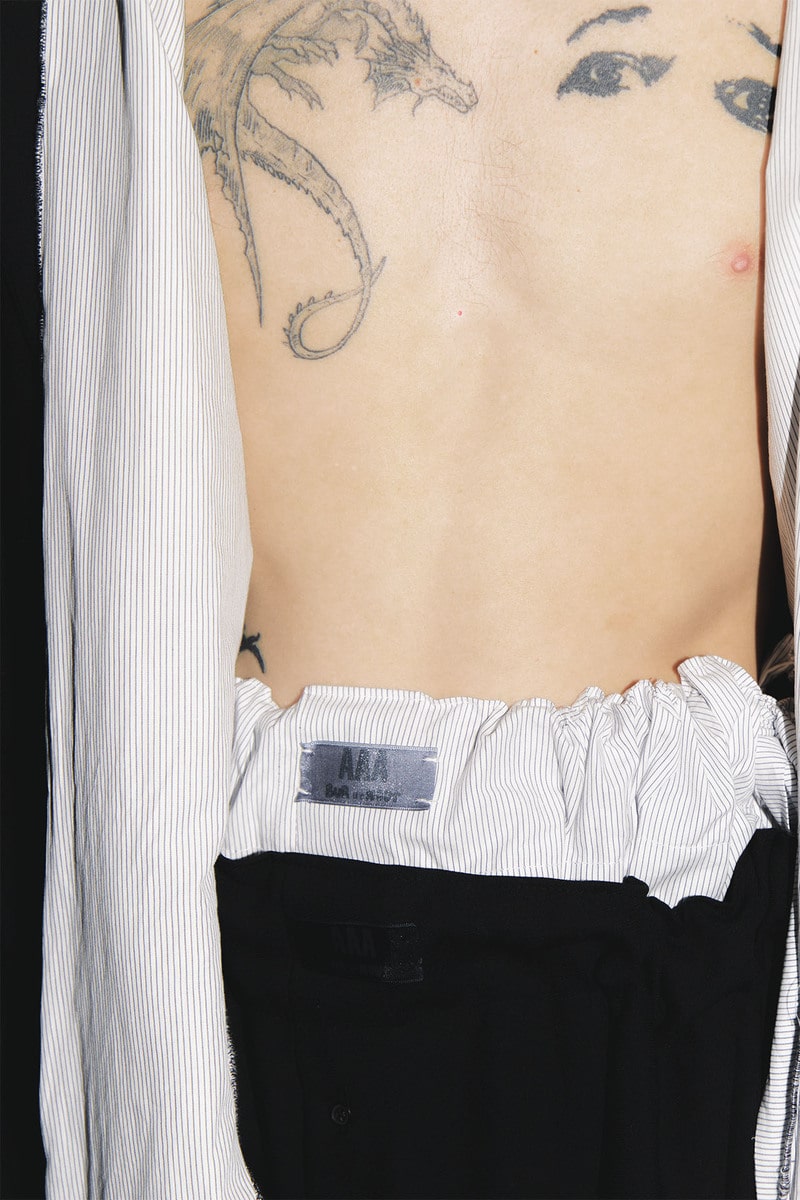
How important is the balance between concept and function in your collections?
For me, striking a balance between concept and function is essential in every collection. Fashion is a form of expression, but it also needs to adapt to real life. I want my designs to tell a story, to carry strong emotions and messages, but never at the expense of comfort and versatility. I don’t want my garments to be just runway pieces. I want them to be part of people’s everyday lives, without losing their visual or symbolic power.
What are the main differences between designing for a show like 080 Barcelona Fashion Week and for your clients’ everyday wear?
Designing for a show like 080 Barcelona Fashion Week versus designing for everyday clients comes with very different challenges. The biggest difference for me is in the expectations and purpose of each project. When I design for a runway – especially one as important as this one – the process is more intense and creatively driven. It’s a race against the clock, where everything has to be more conceptual, bold, and visually striking. The runway is a stage where I share a vision and a message that reflects my style and creative philosophy. The goal is to surprise, move, and present something new.
But when I design for everyday clients, the approach shifts. The challenge becomes much more practical, centered around their daily needs. Their day-to-day may be more predictable than a fashion show, so I focus on offering garments and accessories that are comfortable and functional, without losing the brand’s identity. The expectations are different – clients want something wearable that still makes them feel special, stylish, and at ease in their routine.
How do you view the balance between fashion as art and fashion as business today?
The balance between fashion as art and fashion as a business is pretty off right now. From my perspective, fashion as a business works because it meets consumer needs. Big brands know how to understand and cater to what people want, creating products that sell fast and follow trends. It’s a system built on constant demand, nonstop production, and in that sense, it’s very efficient.
But when we talk about fashion as art, it’s not as valued as it should be. The more experimental or avant-garde collections often don’t get the attention or recognition they deserve. It’s hard to find a real balance because creativity and originality are often pushed aside by the demands of the market. What matters most is what sells easily, not necessarily what’s most original.
And that’s a shame, because it feels like fashion as art gets lost in the noise of mass production, where creativity is reduced to profitability. The true artistry of fashion – the kind that makes you question, reflect, and admire someone’s creative skill – often gets overshadowed by the commercial side of the industry.
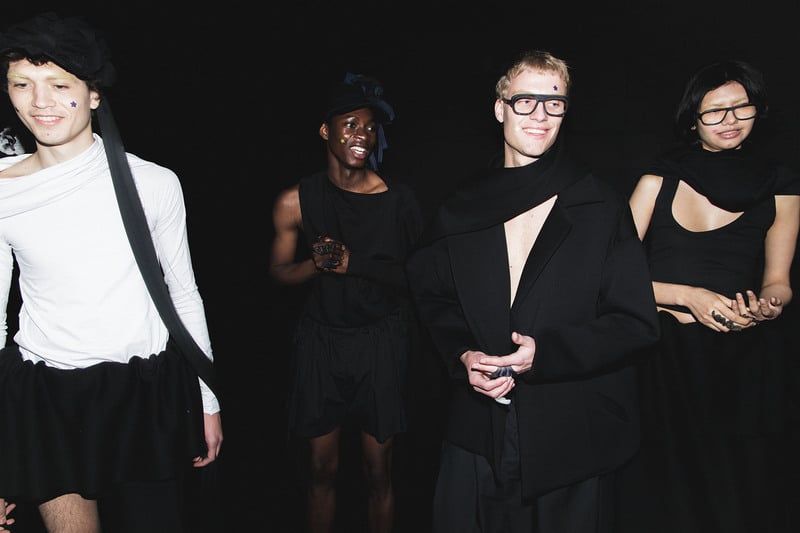
How do you emotionally handle the pressure of being a young voice in Spain’s emerging fashion scene?
It’s not always easy, to be honest. Sometimes I feel like I’m not being taken as seriously as I’d like, and it’s tough when it seems like the bigger brands have all the visibility. There are plenty of obstacles I’ve had to overcome, and the uncertainty of whether my work will succeed can definitely be intimidating.
It’s a tough and challenging path. I often find myself fighting for space in a world dominated by more established brands. But there’s also a positive side. Every small achievement, every opportunity to show my work, gives me the energy and motivation to keep going. Even if the journey isn’t easy, knowing there are people who value what I do, even in such a competitive environment, means a lot. The process can be hard, but it’s also an opportunity for growth and learning.
What’s helped me manage it better is surrounding myself with people who support me. Focusing on my accomplishments – no matter how small – keeps me motivated. Every step forward, even if it seems minor, is a reminder that I’m making progress.
And finally, I’ve realized how important it is to disconnect. I’m someone who really struggles to switch off from work, but I’m learning to manage it. Taking breaks gives me perspective and the clarity and energy I need to return with fresh ideas and renewed strength.
Now that you’ve moved past that stage of uncertainty we talked about, where would you like the brand to go next?
I’d love for AAA Studio to keep growing organically, but without losing its essence. I want to solidify the brand’s identity, strengthen its international presence, and explore new collaborations that allow me to keep experimenting with different formats and disciplines. I want the brand to remain a space for creativity, inclusion, and evolution without getting stuck in one single direction. I’m also interested in deepening our commitment to sustainability and more responsible production methods, always maintaining that balance between innovation, functionality, and storytelling.
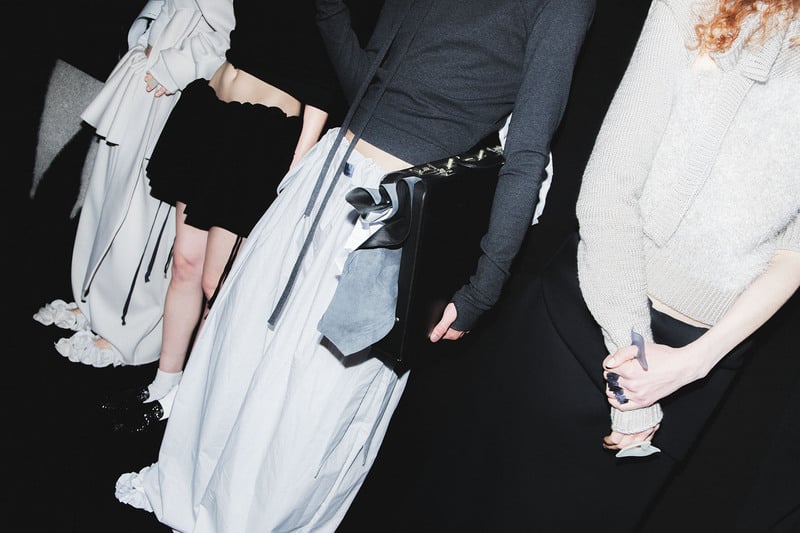
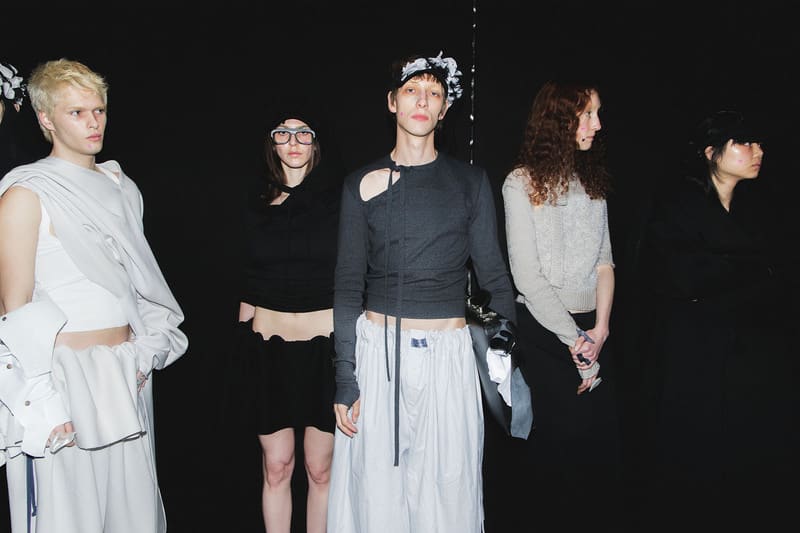
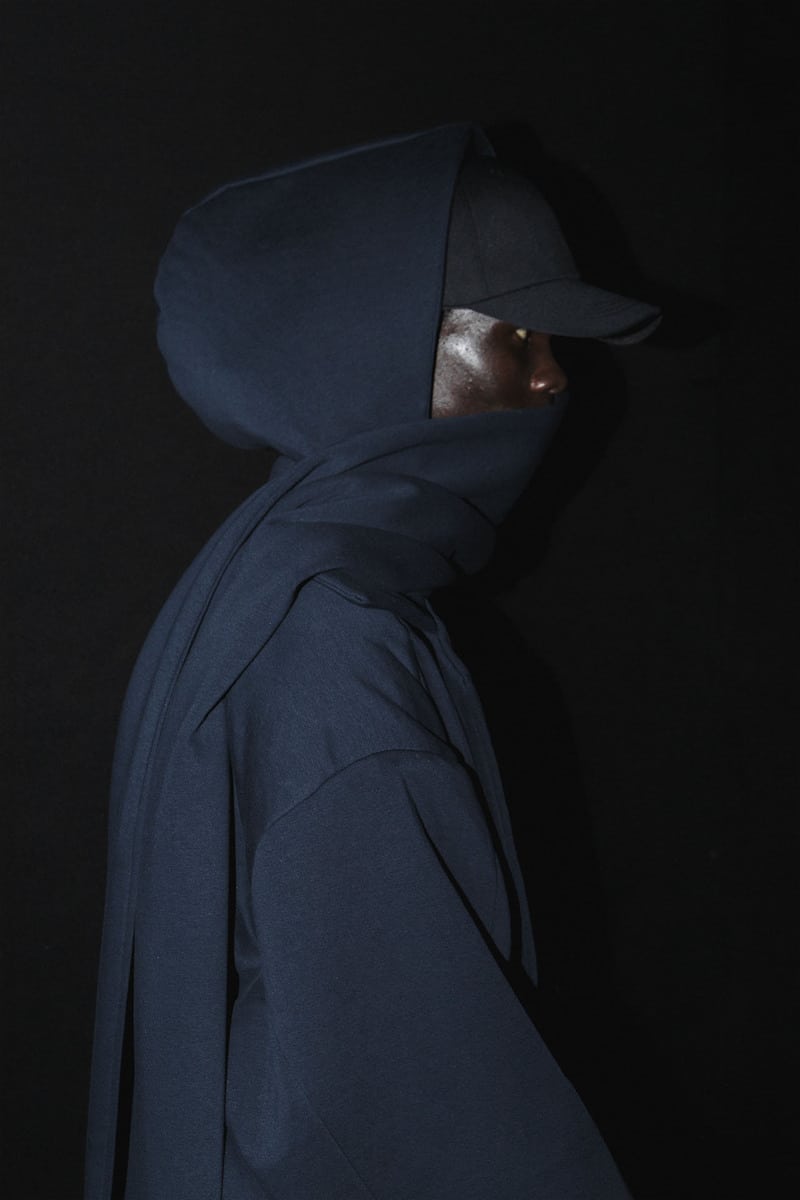

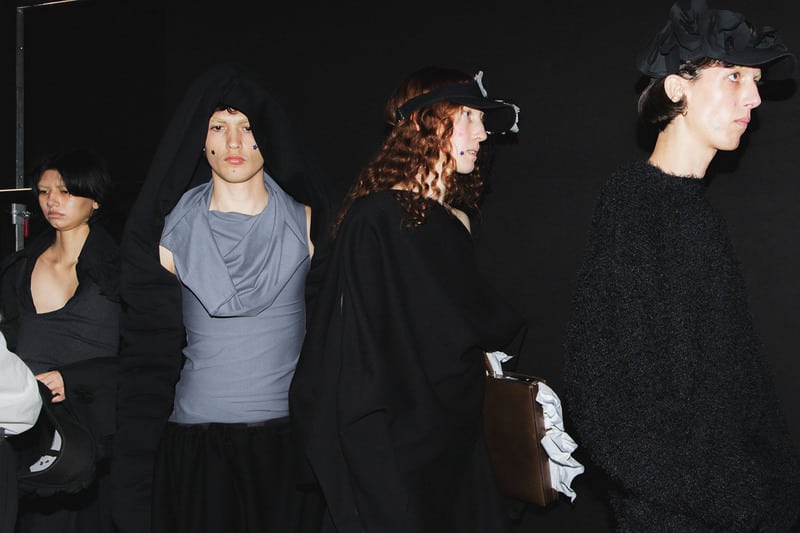
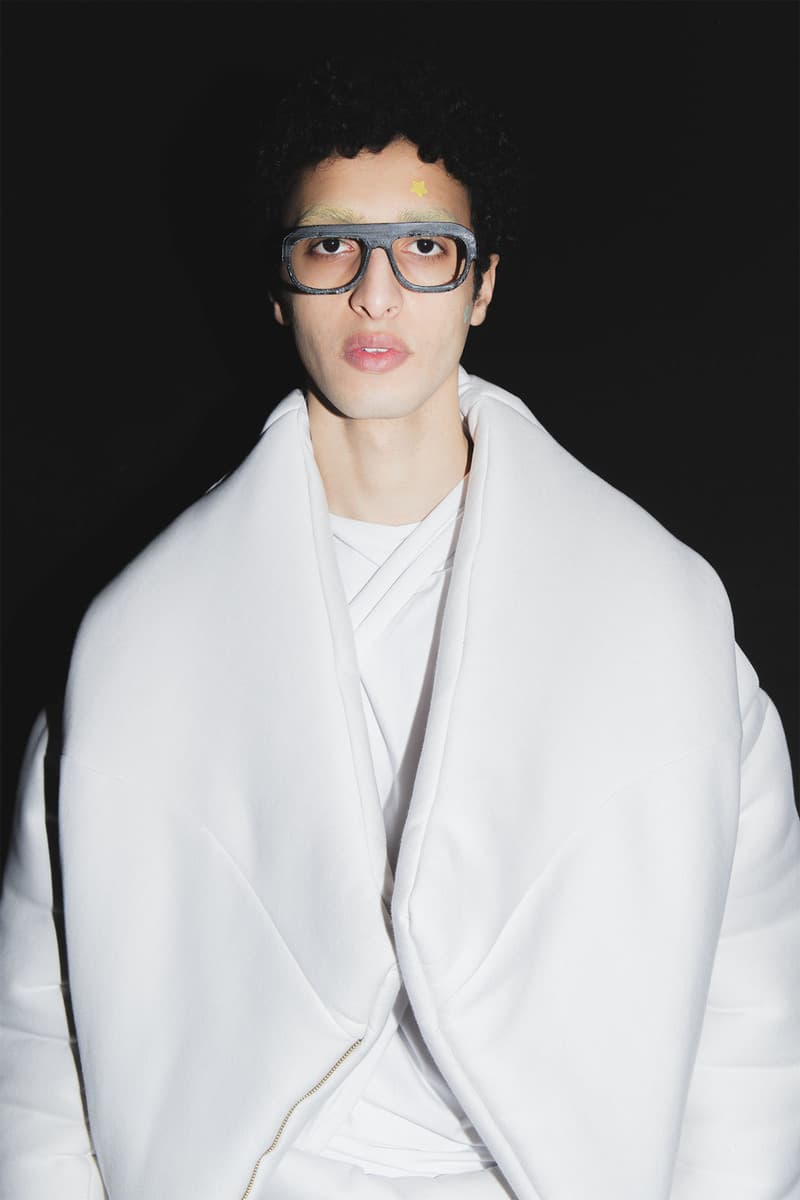
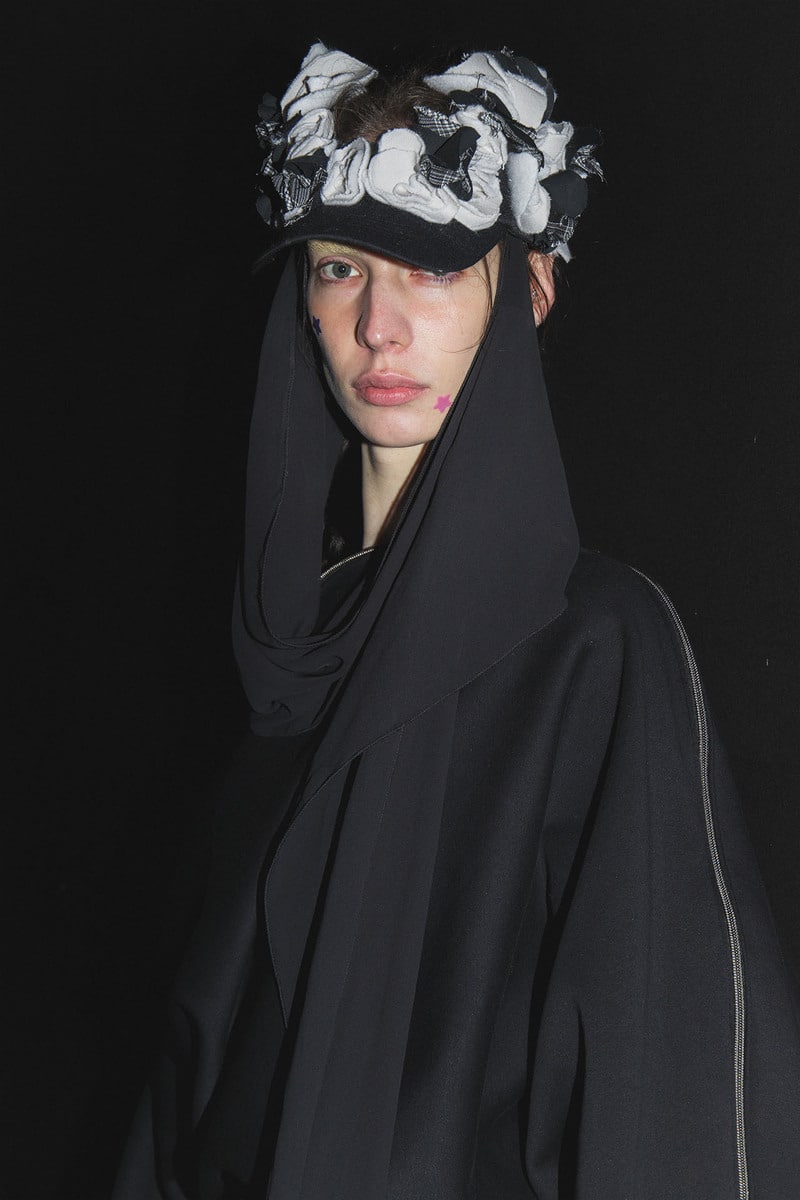
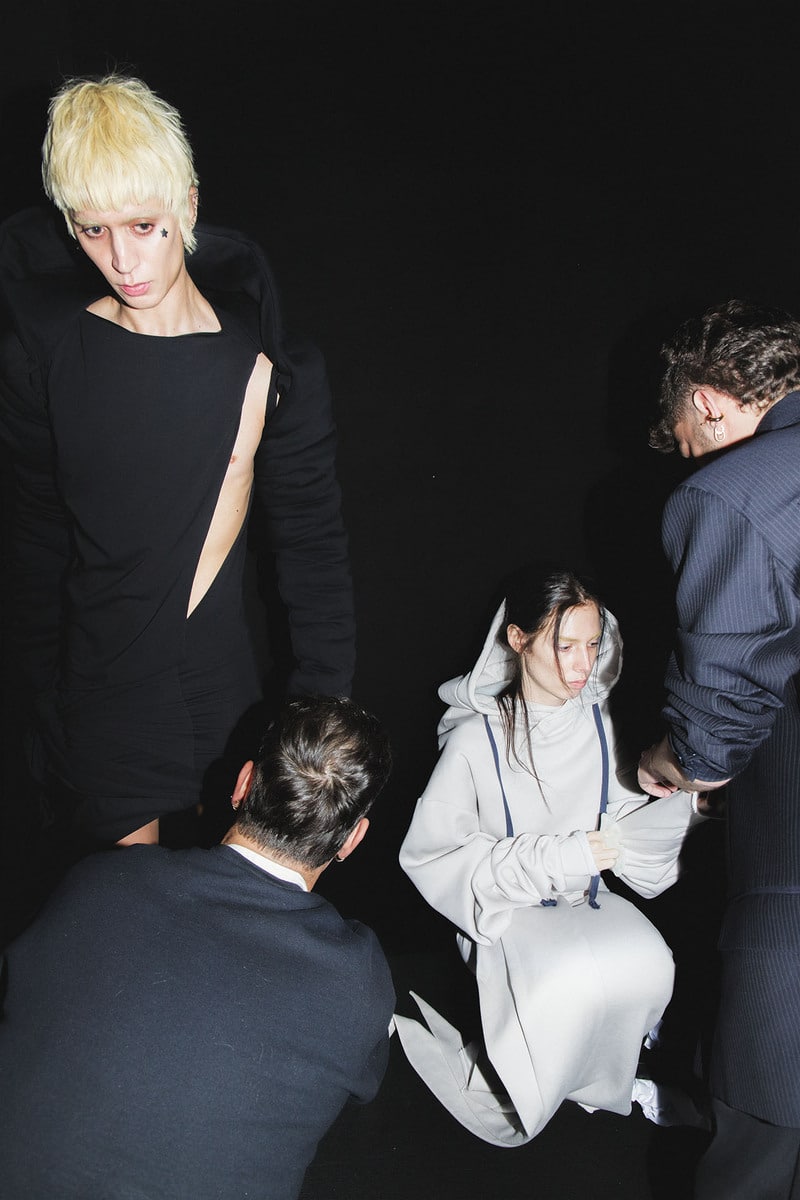
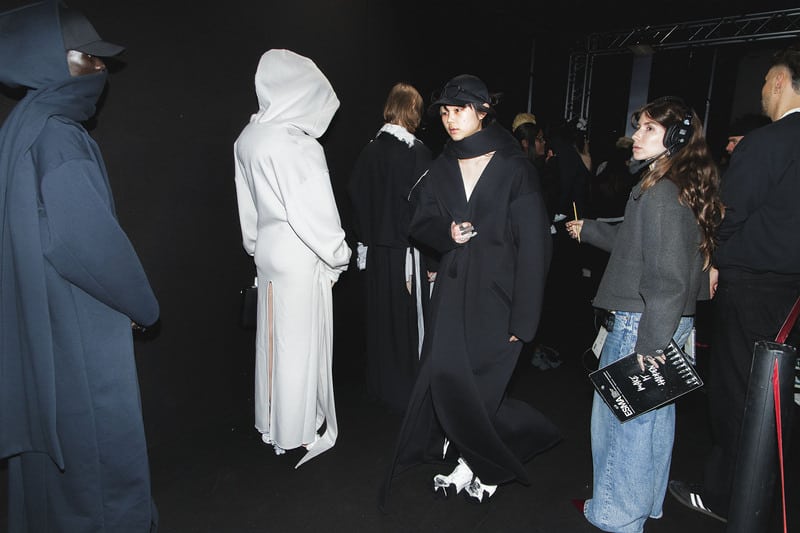
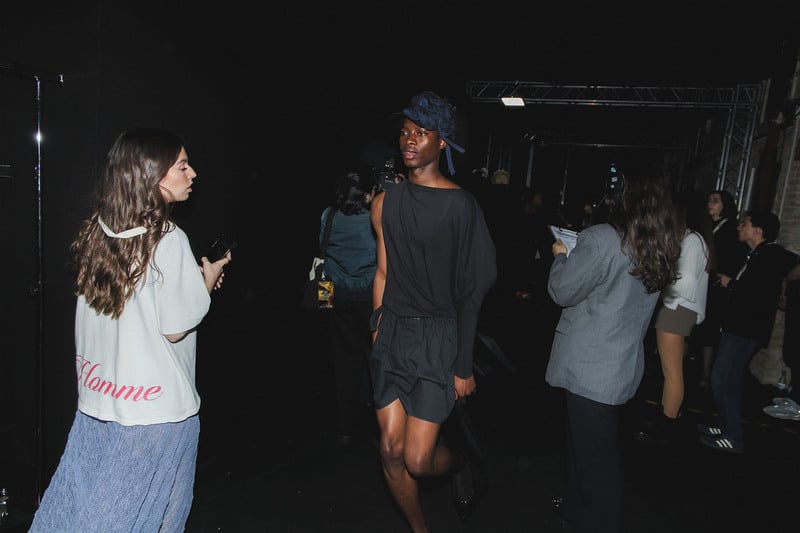
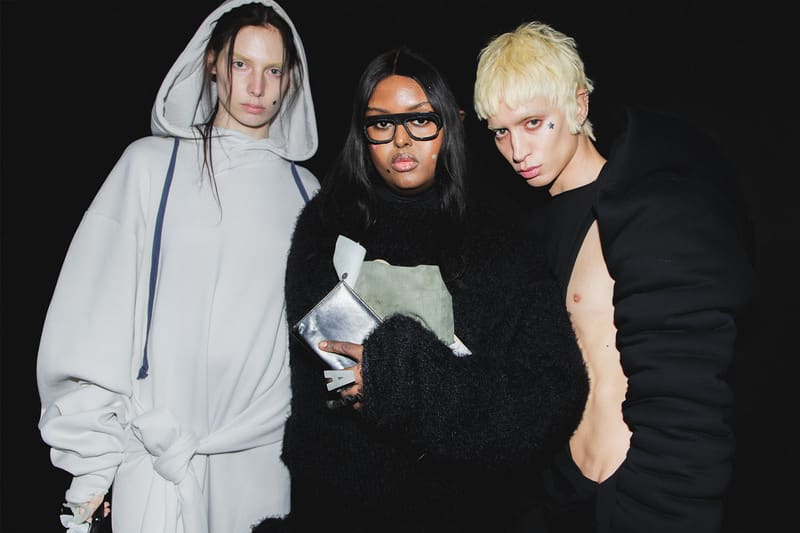
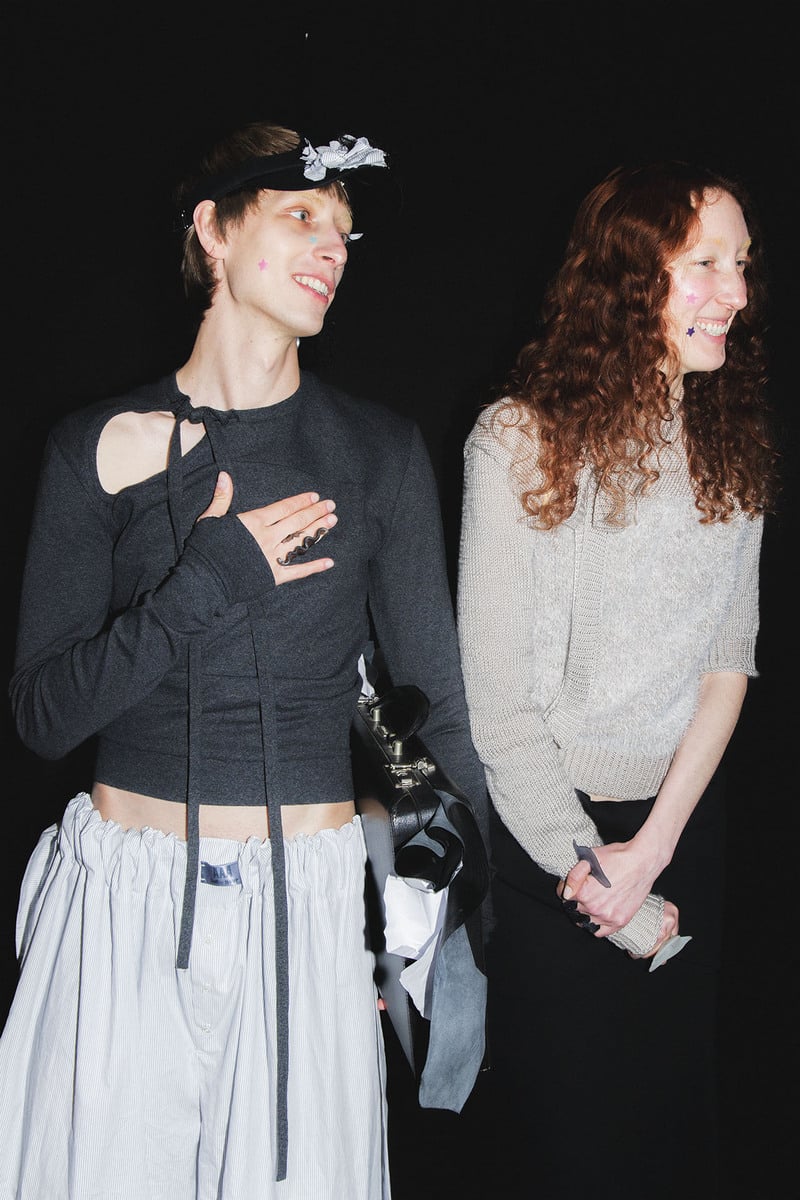


Photography by Ángela Ibañez for FY!

